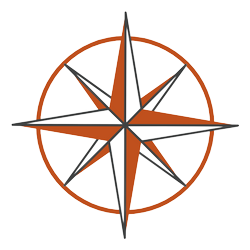Astronomy is a fascinating hobby that people of all ages can enjoy. The night sky is full of wonders, and there's no better way to explore it than with your own telescope. But how do you pick the right one? There are so many different types and sizes of telescopes out there, it can be tough to know where to start.
To pick your first telescope:
Using a telescope for the first time can be an exciting undertaking. But before you can start exploring the night sky, you need to make sure you have the right telescope for the job. This article will guide you through the process of choosing your first telescope!
1. Decide What Type of Stargazing You'll Be Doing
First, think about what you want to see with your telescope. Do you want to look at planets? The Moon? Bright stars? Deep-sky objects like galaxies and nebulae? All of the above?
Your answer will help you narrow down the type of telescope you need. For instance, if you're mostly interested in looking at planets, you'll want a telescope with a long focal length. This will give you a higher magnification, which is necessary for seeing details on planets.
On the other hand, if you're interested in deep-sky objects, you'll want a telescope with a short focal length. This will give you a wider view of the sky, which is necessary for seeing faint objects like galaxies and nebulae.
2. Choose the Right Aperture
The next thing to consider is aperture. Aperture is the size of the telescope's main lens or mirror, and it's measured in millimeters or inches. The larger the aperture, the more light your telescope can collect. And the more light your telescope can collect, the better it will be at showing you faint objects. So if you're interested in deep-sky stargazing, you'll want a telescope with a large aperture.
But keep in mind that larger telescopes are more expensive and heavier, so they can be harder to transport and set up. If you're just starting out, you might want to choose a smaller telescope that's easier to use. You can always upgrade to a bigger one later!
3. Choose the Type of Telescope
There are a few things to consider when purchasing your first telescope. The most important factor is the type of telescope you want. There are three main types of telescopes: refractor, reflector, and catadioptric.
- Refractor Telescopes - Refractor telescopes use a lens at the front of the tube to gather light. They are typically compact and easy to use, making them good for beginners. However, they are more expensive than reflector telescopes.
- Reflector Telescopes - Reflector telescopes use a mirror at the rear of the tube to gather light. They are usually larger than refractor telescopes and require more set-up time. But they are more affordable, so they are a good option if you're on a budget.
- Catadioptric Telescopes - Catadioptric telescopes use a combination of mirrors and lenses to gather light. They are compact and easy to use, like refractor telescopes. But they are more expensive than reflector telescopes.
Once you've decided on the type of telescope you want, you can start looking at specific models. There are many different brands and designs to choose from, so it's important to do your research before making a purchase.
4. Select a Sturdy Mount
The last thing to consider is the mount. The mount is what holds the telescope in place, so it's important to choose a sturdy one. There are two main types of mounts: altazimuth and equatorial.
- Altazimuth Mounts - Altazimuth mounts are simple and easy to use. They are typically used for small telescopes since they can't support the weight of large telescopes.
- Equatorial Mounts - Equatorial mounts are more complex and can support the weight of large telescopes. They are necessary for long-exposure astrophotography and observing faint objects.
At the end of the day, your mount should be able to support the weight of your telescope. The mount is also what you'll use to track objects as they move across the night sky. So if you're interested in astrophotography or observing faint objects, you'll need an equatorial mount.
Conclusion
Choosing your first telescope can be a daunting task. But if you take the time to consider your needs and do your research, you'll be able to find the perfect telescope for you. Just remember to choose the right type of telescope, aperture, and mount for your needs. And don't forget to have fun!





